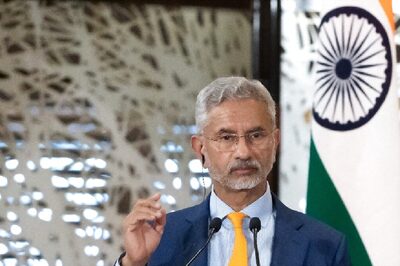
views
Private capital is expected to remain a driving force in the Asia-Pacific commercial real estate market, according to global property advisory Knight Frank in its ‘New Horizon Outlook 2024 Part 1: Asia-Pacific Tomorrow’ report.
According to the report, private capital including High Net Worth Individuals (HNWIs) have been proactive in commercial real estate, raising their investment exposure in 2023, with decision-making guided by the pursuit of capital preservation rather than chasing yields.
The report added that with abundant cash reserves, the reliance on debt for acquisitions is eliminated, enabling HNWIs to secure assets at competitive prices swiftly. In the higher-for-longer interest rate environment, private capital is expected to persist as a driving force in the Asia-Pacific commercial real estate market.
Neil Brookes, global head, capital markets, Knight Frank, said, “The sharp rise in bond yields has shifted the investment landscape and altered the appeal of different asset classes. However, despite the challenging macro backdrop, ample capital remains to be deployed. As markets have come to grips that central banks will unlikely ease policy for some time, assets will continue to re-price in the region.”
“Opportunities for private credit and attractive entry points for assets are likely to emerge in the higher-for-longer environment, which will continue to favour long-term private investors with a low reliance on debt,” Brookes added.
Opportunities continue to prevail in times of crisis
Higher financing costs, global economic uncertainty, a misalignment between seller and buyer price expectations and slow repricing persist as challenges to the Asia-Pacific investment market, leading to a 53.4% contraction in overall transaction volume for the first three quarters of 2023. Given the significant challenges in the macroeconomic landscape, 2023 is likely to close with the lowest total volume for the first time.
Christine Li, head of research, Asia-Pacific, and report author said, “The extensive withdrawal observed from both domestic and international investors suggests a continued reluctance to deploy capital in the current high interest rate environment. The yield spread has tightened to an extent where certain markets are experiencing negative risk premiums.”
“In the current inflated environment, competition is thinner as investors wait on the side-lines for headwinds to die down. Refinancing risks have also caused some assets to be put up for distressed sale. However, with the right strategy and opportune time, investors can still get their hands on favourable assets that offer capital appreciation and positive rental reversions, especially in thematic sectors such as living sectors, life sciences, and data centres.”
Market turbulence prompting transition in favour of core assets
Market volatility has driven investors to prioritise stability, maintaining a conservative risk appetite and favouring core assets. According to an ANREV 2023 Investment Intentions Survey, nearly half of the respondents preferred core investment strategies, marking the highest level since 2014.
Tilt to core strategies to drive living sectors expansion
An asset class that has seen investors ramping up capital allocation, is the living sectors, according to the New Horizon Outlook 2024 Part 1: Asia-Pacific Tomorrow report.
Emily Relf, head of living sectors, Asia-Pacific, said, “Encompassing diverse real estate categories to meet the needs of individuals at various life stages—including student housing, co-living spaces, multi-family properties, and senior living facilities—the sector exhibits defensive characteristics influenced by demographic changes, evolving lifestyles, and technological advancements.”
“The nascent asset class is no stranger to investors as the market cap reached US$ 6 billion a decade ago, with Japan commanding the lion’s share of capital because it is the only established multi-family market in the Asia-Pacific region. Given the lack of multifamily rental products in the region, investors are also exploring development options, particularly in the Australian build-to-rent (BTR) market, where it has quickly gained interest,” Relf added.
The emerging living sector market in the Chinese Mainland
The Chinese mainland is another up-and-coming living sector market. Although still in its formative stage, the sector holds significant growth opportunities owing to its vast population of 1.4 billion and the challenges that families and young professionals encounter when purchasing apartments.
Some institutional players have already forayed into the nation, capitalising on the aforementioned factors, and strategically gaining first mover advantage.
Li added, “China is actively addressing the evolving needs of elderly care, emphasising integrated healthcare solutions that meet the needs of the new age silver generation. The Chinese senior living market, projected to grow by over 12% from now to 2027, responds to the rising elderly population and increasing wealth, fuelling the demand for upscale senior communities.”




















Comments
0 comment